Increasing the Participation of Students with Disabilities in K-12 Computing (2016)
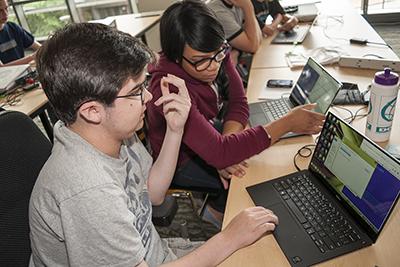
February 2-3, 2016
National Harbor, Maryland
This publication shares the proceedings of a CBI entitled Increasing the Participation of Students with Disabilities in K-12 Computing. The content may be useful for people who
- participated in the CBI,
- teach Exploring Computer Science (ECS), Computer Science Principles (CSP), or another K-12 computing course,
- train teachers of K-12 computing courses,
- seek to increase their understanding of issues surrounding the participation of students in computing education and computing careers,
- would like to access resources to help make their courses, services, and activities more welcoming and accessible to students with disabilities, or
- have promising practices to share with others.
About AccessCSForAll
AccessCSForAll : Including Students with Disabilities in Computing Education for the Twenty-First Century (AccessCSForAll ) works to increase the successful participation of students with disabilities in high school ECS and CSP courses. Central to this work is partnerships with other projects funded by the Computing Education for the 21st Century program of the National Science Foundation (NSF) Directorate for Computer and Information Science and Engineering (CISE) that train computer science teachers and develop curricula for ECS and CSP. AccessCSForAll is led by the Department of Computer Science and Engineering and the DO-IT (Disabilities, Opportunities, Internetworking, and Technology) Center at the University of Washington (UW) and the Department of Computer Science at the University of Nevada, Las Vegas. It is funded by CISE (Grant #CNS-1440843 and #CNS-1440878).
Both ECS and CSP courses are designed to introduce the big ideas in computer science and to inspire students from diverse backgrounds to consider computational competence as part of their career plans. AccessCSForAll focuses on the inclusion of students with disabilities in these courses through two objectives: building the capacity of ECS and CSP teachers to serve those students through professional development for trainers who provide professional development to teachers, curricular units, online tutorials, virtual communities of practice for teachers, and real-time, individual teacher support; and creating accessible materials, both tools (including iterative refinement and deployment of the Quorum language) and curricular units, that ECS and CSP teachers and students can use in their classrooms.
The ultimate goal of AccessCSForAll is to increase the participation of people with disabilities in computing academic studies and careers and to enhance those fields with their unique perspective and expertise.
About the CBI (Increasing the Participation of Students with Disabilities in K-12 Computing 2016)
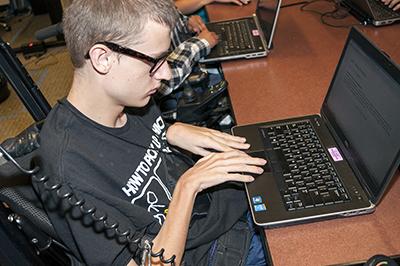
The Increasing the Participation of Students with Disabilities in K-12 Computing CBI, sponsored by AccessCSForAll , was held in National Harbor, MD on February 2 – 3, 2016. Its purpose was to encourage and support efforts to make K-12 courses more welcoming and accessible to students with disabilities. Taking place immediately following the CISE and Education and Human Resources (EHR) Principal Investigator and Community Member meeting, attendees included postsecondary faculty, individuals who provide professional development for K-12 teachers, secondary teachers, disability services professionals, and individuals with disabilities.
As is typical of a CBI
- All participants contributed to its success.
- Speakers participated in group discussions.
- Experts in all topic areas were in the audience.
- Participants gave presentations and participated in large and small group discussions.
- Some predetermined professional development was presented and new content was delivered as the meeting unfolded.
- Participant interests were expressed and expertise was made known.
The CBI provided a forum for discussing recruitment and access challenges, sharing successful practices, developing collaborations, and identifying systemic change initiatives for increasing the participation of students with disabilities in ECS and CSP courses.
Topics discussed included
- universal design of instruction (UDI) and academic accommodations;
- accessibility of programming environments;
- assistive technology and accessible IT design; and
- best practices for making courses welcoming and accessible to students with disabilities.
The agenda for the CBI, summaries of the presentations, and working group discussions are provided on the following pages.
CBI Agenda (Increasing the Participation of Students with Disabilities in K-12 Computing 2016)
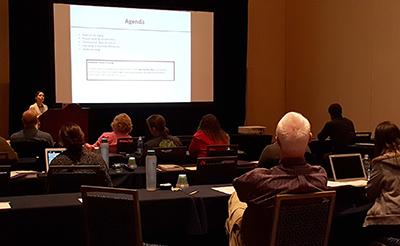
Tuesday, February 2
3:30-4:00 pm Welcome
Introductions, housekeeping, AccessCSForAll >goals, objectives, activities, and resources
Richard Ladner, Andreas Stefik, Sheryl Burgstahler
4:00-4:15 pm Video: How Can We Include Students with Disabilities in Computing Courses?
4:15 – 5:30 pm Students with Disabilities in K-12 Education
- Accommodations and Universal Design – Sheryl Burgstahler
- The Quorum Programming Language – Andreas Stefik
- Enhancing the Accessibility of Bootstrap – Emmanuel Schanzer
- CSP and Students with Learning Disabilities – Sarah Wille
- A Vocal User Interface for Scratch – Amber Wagner
5:30 – 6:15 pm Working Groups
Develop a plan to take concrete steps to increase the accessibility of your curriculum. Develop a plan for including information about disability in your PD. Work to develop resources for teachers and others.
Potential topics:
- Accessibility in ECS
- Accessibility in CSP
- Training K-12 Teachers
6:15 – 6:30 pm Report Out from Working Groups
Evaluation of Day 1
6:30 – 7:30 pm Dinner and Working Group Discussion
What aspects of your curriculum might present accessibility challenges? What do you hope to focus on during tomorrow’s working group?
Wednesday, February 3
8:00 – 9:00 am Breakfast Discussion
What resources or tools would be helpful to you or to teachers in order to be prepared for students with disabilities in their courses?
9:00 – 9:15 am Welcome and Feedback from Day 1
Sheryl Burgstahler
9:15 – 11:00 am Working Groups
11:00 – 11:45 am Report Out From Working Groups
11:45 am – 12 pm AccessCSForAll Resources
Brianna Blaser
12 – 1 pm Lunch and Discussion
Continue discussion of working group topics
Final Evaluation
Presentation Summaries (Increasing the Participation of Students with Disabilities in K-12 Computing 2016)
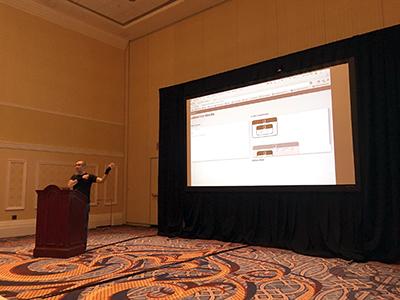
Accommodations and Universal Design
Presenter: Sheryl Burgstahler
Ability exists on a continuum, where all individuals are more or less able to see, hear, walk, read print, communicate verbally, tune out distractions, learn, or manage their health. In K-12 education in the United States, every child is ensured a free, appropriate education in as integrated of a setting as possible. However, in postsecondary education, students must meet whatever course or program requirements apply and are offered reasonable accommodations as needed.
Accommodations and universal design (UD) are two approaches to access for people with disabilities. Both approaches contribute to the success of students with disabilities in computing classes. Accommodations are a reactive process, providing access for a specific student and arise from a medical model of disability. Students might be provided with extra time on tests, books in alternate formats, or sign language interpreters.
In contrast, UD is a proactive process rooted in a social justice approach to disability and is beneficial to all students. UD is designing products and environments to be usable by all people, to the greatest extent possible, without the need for adaptation or specialized design. A UD approach can benefit people who face challenges related to socioeconomic status, race, culture, gender, age, language, or ability. Applying UD to information technology would include building in accessibility features and also ensuring compatibility with assistive technology. In other words, a universally designed website would have text alternatives for graphics, present context via text and visuals, include captions and transcripts for all video and audio content, ensure that all content and navigation can be reached with the keyboard alone, and spell out acronyms.
UD of instruction is an attitude that values diversity, equity, and inclusion. It can be implemented incrementally, focuses on benefits to all students, promotes good teaching practice, does not lower academic standards, and minimizes the need for accommodations. UD can be applied to all aspects of instruction, including class climate, interactions, physical environments and products, delivery methods, information resources and technology, feedback, and assessment. Examples include the following:
- Arranging seating so that everyone has a clear line of sight.
- Avoiding stigmatizing a student by drawing undue attention to a difference.
- Using large, bold fonts with high contrast on uncluttered overhead displays and speak aloud all content.
- Providing multiple ways to gain and demonstrate knowledge.
- Avoiding unnecessary jargon; defining terms.
- Providing scaffolding tools (e.g., outlines).
- Providing materials in accessible formats.
- Providing corrective opportunities.
- Testing in the same manner in which you teach.
- Minimizing time constraints as appropriate.
Educators who effectively apply UD and accommodations level the playing field for students with disabilities and make instruction welcoming to, accessible to, and usable by all students. They minimize, but do not eliminate, the need for accommodations.
The Quorum Programming Language
Presenter: Andreas Stefik
Quorum is a programming language originally designed for individuals who are blind or have low vision. It uses human factors data as an evidence-foundation and was inspired by two observations: (1) much of the computer science education literature relies on visual representations and (2) text-based programming in languages with traditional syntax (e.g., C++ or Java or Python’s whitespace rules) are difficult to understand through audio.
As the project progressed, we found evidence that programming language designers rarely use scientific evidence involving humans in making decisions for human-facing decisions. Even venues with a stated interest in the human impact of programming languages (e.g., the Psychology of Programming Interest Group) rarely collect replicable scientific evidence. In designing Quorum, we conducted randomized controlled trials on competing language designs. Via these trials, we’ve found that static typing improves productivity over dynamic typing and that some languages are just as difficult to use initially for novices as languages that are randomly generated (so-called placebo languages). Quorum’s approach is different in that we use the data collected from experiments to make ongoing changes to the language, thereby making it easier to use.
Currently, nearly two-thousand students are taught Quorum each year, and nearly half of schools for the blind in the US teach programming using it. Quorum runs on the Java Virtual Machine and can be used for a wide variety of applications (e.g., the web, music, speech, screen readers). We have a variety of libraries of interest to children in K-12, including accessible robotics and a computer gaming engine. Upcoming features include mobile phone support and 3D accessible gaming support. Teaching materials for Quorum include an 18-week curriculum, online and offline tools support, a draft textbook, and real-time support via email or Facebook. Visit Quorum Language to learn more and Hour of Code for an online tutorial.
Enhancing the Accessibility of Bootstrap
Presenter: Emmanuel Schanzer
Bootstrap is a program that integrates equitable access and success in math and computer education for all students in middle and high school. Bootstrap works in schools, programs, and organizations across the United States to foster in-depth learning that is accessible and welcoming to all students. Bootstrap also offers a workshop to deliver specialized training to teachers so they have the tools and curriculum to teach programming, program design skills, and other necessary programming skills.
Bootstrap is committed to being accessible to students with a broad range of disabilities, including visual and sensorimotor impairments. The programming language and all its interactive elements (read evaluation print loop, error messages, etc.) are accessible by screen reader. Its structured editor and block programming editor both have accessibility-enabled features, which can read code based on meaning instead of syntax and provide a hands-free drag and drop. Bootstrap is committed to being accessible, and calls for future developers to take on the challenge of creating accessible products and conducting usability testing with people with a wide range of abilities.
Bringing CSP to Students with Learning and Attention Disabilities
Presenter: Sarah Wille
The computer science education field is engaging in unprecedented efforts to generate a wide-scale infrastructure for high school computer science education, and a key component of this effort is the new AP CSP course. However, as teachers and school leaders consider ways to provide access to high school computing, many are struggling to identify what they need to do to make the course materials accessible for all students—including those with learning and attention disorders. Expanding learning opportunities in computer science is an issue of educational equity that must include these students, yet this particular group of learners is rarely acknowledged in conversations about broadening participation in computer science. Students with disabilities, in general, are simply less visible in these conversations, despite the creativity and novel thinking these students bring to computing.
The National Center for Learning Disabilities estimates that children with learning disabilities comprise 5 – 20% of the total school-age population, although the learning and attention issues of school-age students often go unidentified and/or unaddressed (Cortiella & Horowitz, 2014, https://www.ncld.org/wp-content/uploads/2014/11/2014-State-of-LD.pdf). These students face challenges around receiving, storing, processing, retrieving, and communicating information in the classroom because of psychological processing deficits (Cortiella & Horowitz, 2014; Burgstahler, 2012, www.washington.edu/doit/academic-accommodations-students-learning-disabi...). As K-12 computer science education expands, teachers will need guidance about how to remove or accommodate for barriers specific to learning and attention disorders to enable these students to simply access the content in a way that works for their particular brain structures and functions.
To address this challenge, Outlier Research & Evaluation at the Center for Elementary Mathematics and Science Education (CEMSE) at the University of Chicago, in collaboration with the Wolcott School (an independent preparatory high school in Chicago for students with learning differences), has been funded by the NSF to undertake exploratory research to identify the challenges students with learning and attention disorders face as they engage with computer science content and instruction; work with a team of special education specialists to recommended specific adjustments to lessons to address those challenges; and test adjusted lessons from two AP CSP curricula: Beauty and Joy of Computing (for NYC, bjc.edc.org/bjc-r/course/bjc4nyc_2015-2016_teacher.html?course=bjc4nyc_2015-2016.html&novideo&noassignment) and Code.org’s CS Principles (code.org/educate/csp) with students with learning and attention disorders. This work will be among the very few evidence-based studies in K12 computing education about the needs of students with specific learning and attention disorders, and perhaps the only research study focused specifically on their participation in AP CSP. As such, it will generate foundational knowledge on which to begin to build the capacity of the K-12 computing education community to broaden these students’ participation in computing and help ensure this sizeable student population is explicitly included in our nation’s Computer Science For All initiative.
Visit Outlier Research and Evaluation, University of Chicago and Wolcott College Prep to learn more.
Myna: Increasing the Accessibility of Block-Based Languages
Presenter: Amber Wagner
For individuals with motor impairments, block-based languages, such as Scratch, can be difficult or impossible to use due to their dependence on the mouse and keyboard. Vocal control is one possible alternative to the mouse and keyboard. Myna, a Vocal User Interface, was created so that users can program block-based languages purely by voice. For example, if a user wishes to drag and drop the “move steps” block onto the screen, the user would simply say, “drag and drop move steps.” Myna would then programmatically control the mouse and move the “move steps” block onto the editor. Myna was evaluated by clients of United Cerebral Palsy (UCP) of Greater Birmingham in addition to students participating in a UCP-sponsored summer camp. Overall, the users enjoyed using Myna. One student in particular was extremely proud of the Pokémon program he created by the end of the summer camp.
Although originally developed to work with Scratch v1.4, Myna has been extended to work with additional block-based languages (e.g., Lego Mindstorms, Scratch v2.0, Snap!, Pixly, Spherly). The process of mapping a block-based language to work with Myna is very time consuming and tedious. To reduce the amount of time required to map additional block-based languages, a tool called MynaMapper was created, which collects the information needed for Myna in a semi-automated manner. MynaMapper takes approximately 84% less time to map the required data than manual methods.
It is hoped that tools such as Myra will lead to greater participation by people with disabilities in computing classes and careers.
Working Group Outcomes (Increasing the Participation of Students with Disabilities in K-12 Computing 2016)
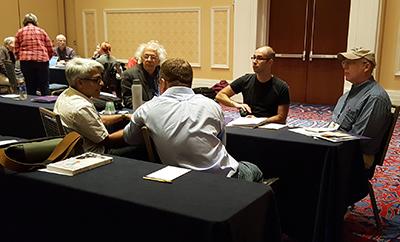
Each of the three working groups addressed one of the following topics:
- Accessibility in ECS
- Accessibility in CSP
- Training K-12 Teachers
Their discussions are summarized below.
Accessibility in ECS
Suggestions for addressing accessibility in ECS includes the following:
- In ECS professional development materials, Quorum is mentioned at the very beginning when a video is shown about students with disabilities. It should be mentioned again when programming is covered. A video that specifically addresses Quorum could be useful.
- The ECS curriculum seems strict on the surface, yet many teachers find room for additions and changes. If Scratch is not accessible to some students, teachers needs to be presented with an alternative accessible option that could be used with the same ECS curriculum.
- AccessCSForAll should increase its efforts with the CS10K community to get more people involved in accessibility.
- Representatives from AccessCSForAll could attend more professional development sessions and teach about accessibility and diversity.
- Since a main focus of ECS curriculum is equity and inclusion, having a variety of underrepresented groups discussed (rather than only racial/ethnic diversity) should be addressed in the curriculum.
- Educators who work with students with disabilities should be encouraged to participate in the Hour of Code so they become more comfortable with programming. This involvement may make them more likely to recommend computing courses to their students.
Accessibility in CSP
This group discussion included the following:
- Data visualization is a stumbling block for many teachers. We need a way to make data visualization tasks accessible, more resources for teaching data analysis, and age appropriate data sets to use.
- One resource used in some CSP courses is the online book Expeditions through Alice by Beth Simon. Having a Quorum version of this book could be helpful.
- Checklists should be modified to fit specific situations, workspaces, and people—putting dates on these checklists as to when a user wants to complete a task by.
- Resources that might be useful for teachers include Cameo (tactile electronic cutter), adhesive.com (MOOC), abstractingCS.com (resources developed by CSP developers), snapguide.com (physical toys), GapMinder.org (statistics resources), Baby Name Wizard (data source site).
Training K-12 Teachers
Suggestions brought out by this group include the following:
- Teachers of CSP need to be aware about how accommodations work for performance tasks. According to the Educational Testing Service (ETS), accommodations for performance tasks should be determined and implemented locally.
- Educators need to give students the tools and skills to advocate for themselves. This will prepare them for computing courses, but also for life beyond high school.
- Trainers should consider including special education teachers in computer science professional development, so they won’t be intimidated with teaching computer science or recommending it for their students.
- Teachers would benefit from a just-in-time support guide that details specific accommodations that could be implemented for each lesson in the curriculum for students with specific disabilities.
Discussion Summaries (Increasing the Participation of Students with Disabilities in K-12 Computing 2016)
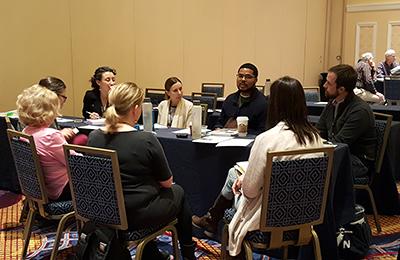
Notes related to specific questions discussed are presented below. CBI participants discussed tw questions: what aspects of your curriculum might present accessibility challenges and what resources or tools would be helpful to you or to teachers in order to be prepared for students with disabilities in their courses.
What aspects of your curriculum might present accessibility challenges?
- Some programming languages are inaccessible to individuals who have mobility or sensory impairments. Others may be challenging for students with learning disabilities.
- For some students, particularly those with learning disabilities, animations and complex images can be more accessible than volumes of words. However, these images are inaccessible to students who are visually impaired unless they are described well. In addition, audio must be captioned or transcribed for students with hearing impairments.
- Student-facing materials are not always designed to be accessible to students with disabilities.
- Tools can affect pedagogy; classrooms can be more flexible with cloud storage protocols, a version tool for formative assessment, and a programming language that is a block language. Each of these things could present accessibility challenges.
- The physical space in a computer science classroom can be challenging for students with disabilities that affect sight and mobility.
- Free online resources and tutorials should be made accessible, since a lot of teachers rely on these resources.Many integrated development environments (IDEs) are inaccessible. However, many programmers don’t use IDEs at all; many just use a text editor. While a student with a visual impairment can use a screen reader’s verbose mode, its use can be very frustrating.
What resources or tools would be helpful to you or to teachers in order to be prepared for students with disabilities in their courses?
- Videos for recruiting students with disabilities into computing courses and videos that showcase accessible technology, including demonstrations of people with different disabilities using the technology.Resources related to new accessible technology as it becomes available, since computer science teachers need to learn about it, but often these resources are not on their radar.
- Resources about how Quorum or other accessible technologies can be used in Computer Science Principles classes to ensure the curriculum is accessible.
- Resources targeted towards teachers for working with students with disabilities.
- Voice-controlled programming languages that can be used without a keyboard and mouse.
- Strategies for identifying students with disabilities who could be successful in computing courses but might not seek out computing courses on their own.
- Profiles of computing students and professionals with disabilities sharing their stories to inspire and motivate other students and give teachers examples of how students can be successful.
- A unit to be used in professional development of teachers about students with disabilities in computing courses that covers accessibility and universal design. This would include tools and resources that those teachers could then use in the classroom.
- Resources about accessibility in relation to the most popular programming CSP instructional materials, including AppLab, SNAP!, and Scratch.
- Accommodations and universal design practices for pair work, journaling, and tasks that will be on the Advanced Placement exam.
- A list of most accessible Java IDEs so computer science teachers can be encouraged to choose a better IDE, along with instructions for how to use a text editor to edit, compile, and run programs.
- Specific resources for learning disabilities, including something with vocabulary and key context for students to refer to.
- Quick reference guides for accessible programming tools, CSP and Accessibility challenges, and ECS and CSP resources.
- A guide that addresses how teachers can implement accommodations with disabilities and how sometimes their use can benefit the class as a whole.
CBI Participants (Increasing the Participation of Students with Disabilities in K-12 Computing 2016)
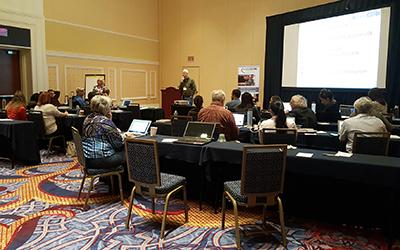
Stakeholder groups represented in the CBI included
- postsecondary faculty,
- individuals who provide professional development for K-12 teachers,
- secondary teachers,
- disability services professionals, and
- individuals with disabilities.
Brianna Blaser
Counselor/Coordinator
DO-IT, University of Washington
Project Coordinator, AccessCSForAll
Rachel Brody
Senior Managing Director; Diverse Learner Initiative
Teach for America
Sheryl Burgstahler
Director
DO-IT, University of Washington
Co-PI, AccessCSForAll
Monica Cardella
Associate Professor
Purdue University
Lyla Crawford
Program Coordinator
DO-IT, University of Washington
Evaluator, AccessCSForAll
Rebecca Dovi
Education Director
CodaVA
Laura Duffy
Inclusion Resource Teacher
Charles County Public Schools
Paul Goldenberg
Distinguished Scholar
Education Development Center, Inc
Tim Fahlberg
Department Head
School for the Blind and Visually Impaired
Joann Freese
Project Director, Interactive Producer
SciGirls, Twin Cities Public Television
Joann Harriman
Superintendent
R.S.U. 26 Orono, Maine
Helen Hu
Professor
Westminster College
Lynne Ipina
Associate Professor
University of Wyoming
Larry Johnson
Instructional Specialist for Special Education
Charles County Public Schools
Tom Keller
Senior Research Scientist
Maine Mathematics and Science Alliance
Brittney Kugler
Professional learning Specialist
Museum of Discovery
Richard Ladner
Computer Science Professor
University of Washington
PI, AccessCSForAll
Deanna Linn
AmeriCorps Vista
Montana Girls STEM Collaborative Project
Dianne O’Grady Cunnif
Instructional Specialist for Computer Science and Technology Education
Charles County Public Schools
Patrick O’Steen
Regional manager, Pacific Northwest
TEALS
Rebecca Pearson
Career and Technology Education Specialist
Charles County Public School
Blythe Samuels
Computer Science Teacher
Powhatan High School
Emmanuel Schanzer
Program Director
Bootstrap
Nigamanth Sridhar
Associate Professor
Cleveland State University
Andreas Stefik
Assistant Professor
University of Nevada, Las Vegas
Amber Wagner
Assistant Professor
Kennesaw State University
Sarah Wille
Senior Researcher
Outlier Research and Evaluation, University of Chicago
Communities of Practice (Increasing the Participation of Students with Disabilities in K-12 Computing 2016)
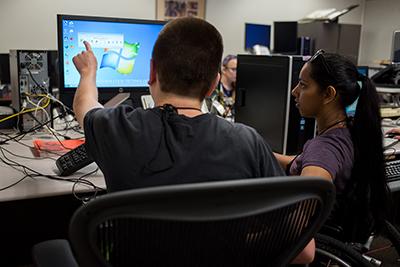
AccessCSForAll engages stakeholders that include national leaders within Communities of Practice (CoPs). CoPs share perspectives and expertise and identify practices that promote the participation of people with disabilities in STEM fields. Those most related to AccessCSForAll are described below.
Broadening Participation CoP
In this CoP, individuals who administer projects that serve to broaden participation in STEM fields
- discuss how to recruit participants with disabilities and accommodate them in their programs and activities and how to make their offerings more accessible overall
- recruit their participants with disabilities into disability-related e-mentoring, internships, academies, and workshops to complement their activities
- co-sponsor events and discuss potential new projects and share funding possibilities
Computing Faculty, Administrators, and Employers CoP
Computing professionals, faculty, and administrators as well as representatives from industry and professional organizations use this CoP to increase their knowledge about disabilities and make changes in computing departments that lead to more inclusive practices. Participants
- gain and share knowledge and help identify issues related to the underrepresentation of people with disabilities in computing fields
- help identify and field test Computing Department Accessibility Indicators to make computing departments more welcoming and accessible to students with disabilities
- help organizations make their websites accessible to visitors with disabilities, their conferences accessible to attendees with disabilities, and their conference programs inclusive of disability-related topics
- identify campus computing events to which students with disabilities might be invited
- discuss how to include accessibility topics in postsecondary computing curriculum
You and your colleagues can join CoPs by sending the following information to doit@uw.edu:
CoP(s) you would like to join
name
position/title
institution
postal address
email address
For information about other CoPs affiliated with AccessCSForAll, consult our partner program AccessComputing.
Resources (Increasing the Participation of Students with Disabilities in K-12 Computing 2016)
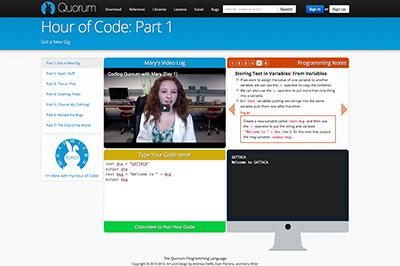
The AccessCSForAll website contains
- information about project goals, objectives, activities, and project partners
- evidence-based practices that support project goals and objectives
- resources for students with disabilities
- educational materials for teachers and administration
AccessCSForAll maintains a searchable database of frequently asked questions, case studies, and promising practices related to how educators can fully include students with disabilities in computing activities. The Knowledge Base can be accessed by following the “Search Knowledge Base” link on the AccessCSForAll website.
The Knowledge Base is an excellent resource for ideas that can be implemented in computing programs in order to better serve students with disabilities. In particular, the promising practices articles serve to spread the word about practices that show evidence of improving the participation of people with disabilities in computing.
Examples of Knowledge Base questions include the following:
- What are specific computer applications that can assist students with learning disabilities?
- How can K-12 educators promote the use of accessible technology in schools?
- Are there any web-based tutorials on accessibility?
- How can principles of universal design be used to construct a computer lab?
- How can K-12 computing instructors get support working with students with disabilities?
Individuals and organizations are encouraged to propose questions and answers, case studies, and promising practices. Contributions and suggestions can be sent to accesscsforall@uw.edu.
For more information on AccessCSForAll, universal design, and accessible computing education, review the following websites, videos, and brochures.
- To find more information on universal design in education, visit the Center for Universal Design website.
- To learn more about and get involved with AccessCSForAll, visit the AccessCSForAll website.
- To discover ways to encourage students with disabilities to pursue computing and how to create an accessible inclusive environment for them, view AccessCSForAll videos.
- To read more discussions and presentations on including students with disabilities in ECS and CSP courses, read Increasing the Participation of Students with Disabilities in Exploring Computer Science and Computer Science Principles Courses.
- To learn more about accessible programming, explore Quorum.
- To learn more about and to get involved with a similar project, visit AccessComputing.
- To read profiles of computing professionals and students with disabilities, visit the Choose Computing profiles.
Acknowledgments (Increasing the Participation of Students with Disabilities in K-12 Computing 2016)
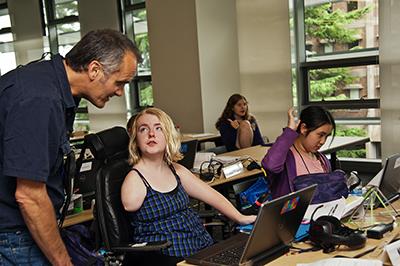
AccessCSForAll capacity building activities are funded by the National Science Foundation (Grant #CNS1440843). Any opinions, findings, and conclusions or recommendations expressed in this material are those of the CBI presenters and publication authors and do not necessarily reflect the views of the National Science Foundation.
DO-IT
University of Washington
Box 354842
Seattle, WA 98195-4842
accesscsforall@uw.edu
www.washington.edu/accesscomputing/accesscsforall
206-685-DOIT (3648) (voice/TTY)
888-972-DOIT (3648) (toll free voice/TTY)
206-221-4171 (FAX)
509-328-9331 (voice/TTY) Spokane
AccessCSForAll Principal Investigators: Richard E. Ladner, Ph.D.
and Andreas Stefik, Ph.D.
Co-principal investigator: Sheryl Burgstahler, Ph.D.
© 2016 University of Washington. Permission is granted to copy this publication for educational, noncommercial purposes, provided the source is acknowledged.